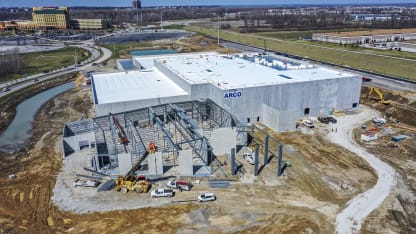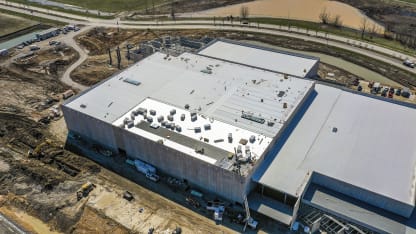Quinn likes to say that the people behind the 277,000 square-foot, four-sheet [three indoors, one outdoors] St. Louis Community Ice Center are practicing "Midwestern environmentalism," which means doing good while being budget-conscious.
"There's a reality that you have to be price-sensitive to what people can afford to pay to play what is already an expensive sport," he said. "You get smart about saying, 'OK, how can we buy recycled materials and save money' or 'How can we buy a couple of used Zambonis and refurbish them or buy a used electric Zamboni,' which we did. Avoiding all the wear and tear of what happens to build something from brand new we're trying to be smart about trying to find materials and things we can use again."
For example, rink patrons will sit on benches made of recycled plastic and lumber. The facility will have 10,000 square feet of reclaimed wood, mostly from barns in Missouri and southern Illinois, instead of wood from fresh-cut trees. It will be illuminated by energy-efficient LED lighting, and heat from the ice-making systems will be recaptured for use in the ice melt pits and the underslab of the rinks.
In St. Paul, self-tinting ceiling-to-wall glass provides a bird's eye view of downtown from the one ice sheet of ice inside TRIA Rink, which opened in January 2018.
"It's heat-resistant and it will block the sunlight from impeding on the ice and melting the ice," Jamie Spencer, executive vice president for business for the Wild, said of the Minnesota-produced SageGlass. "It preserves the beauty to the downtown skyline without damaging the rink."
The rooftop rink, which opened in January 2018, is located on the fifth floor of the Treasure Island Center, which also houses offices, stores and restaurants.





